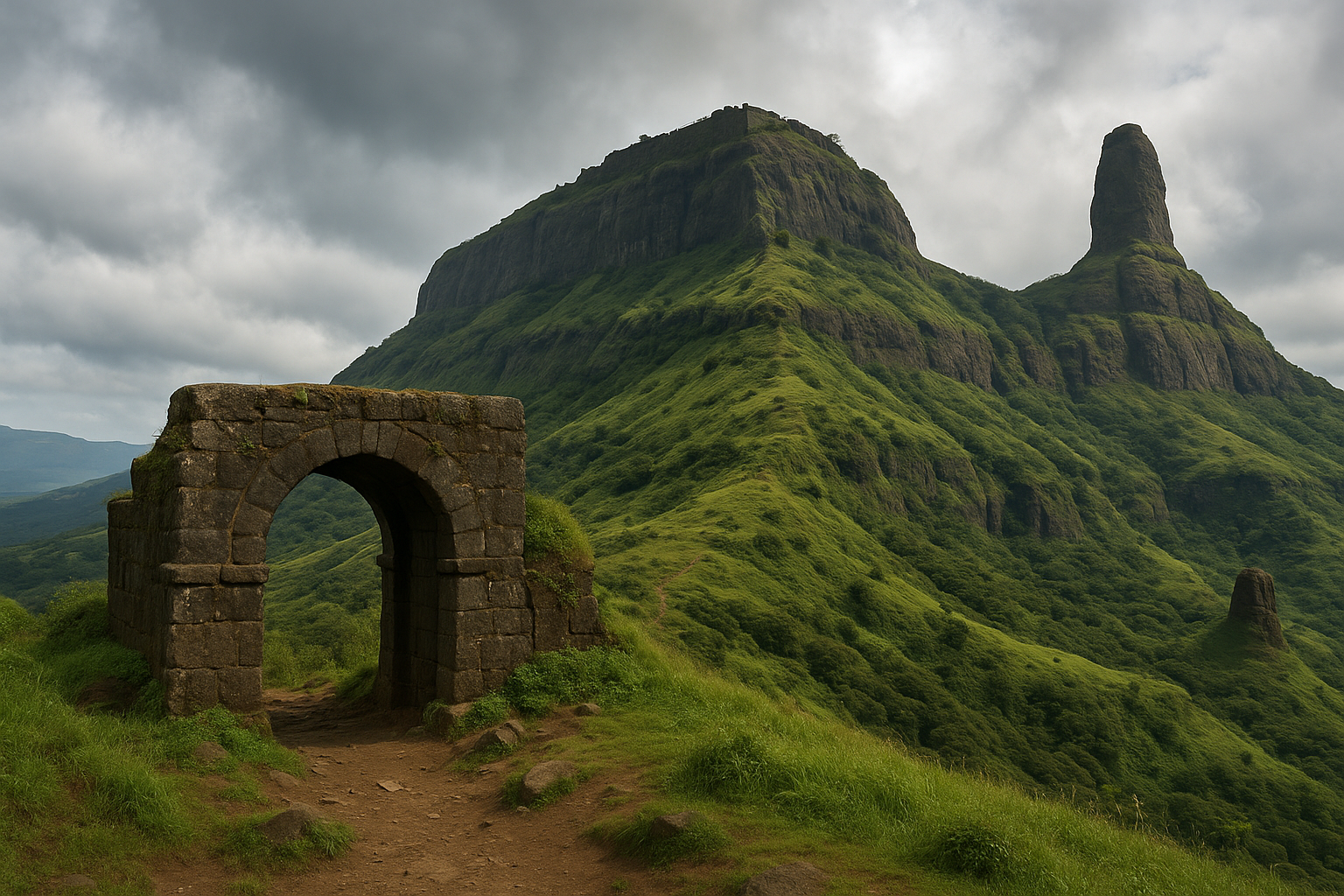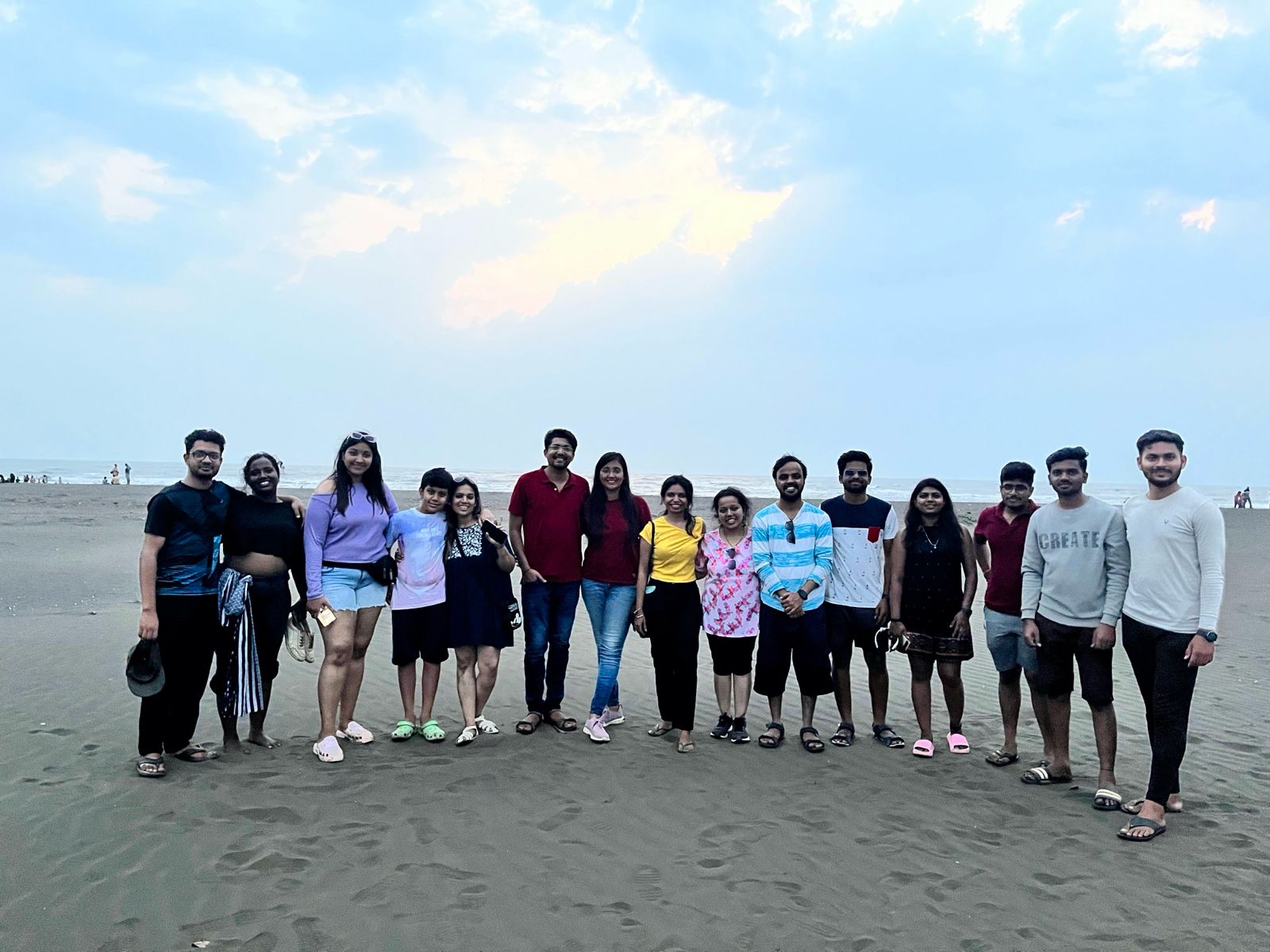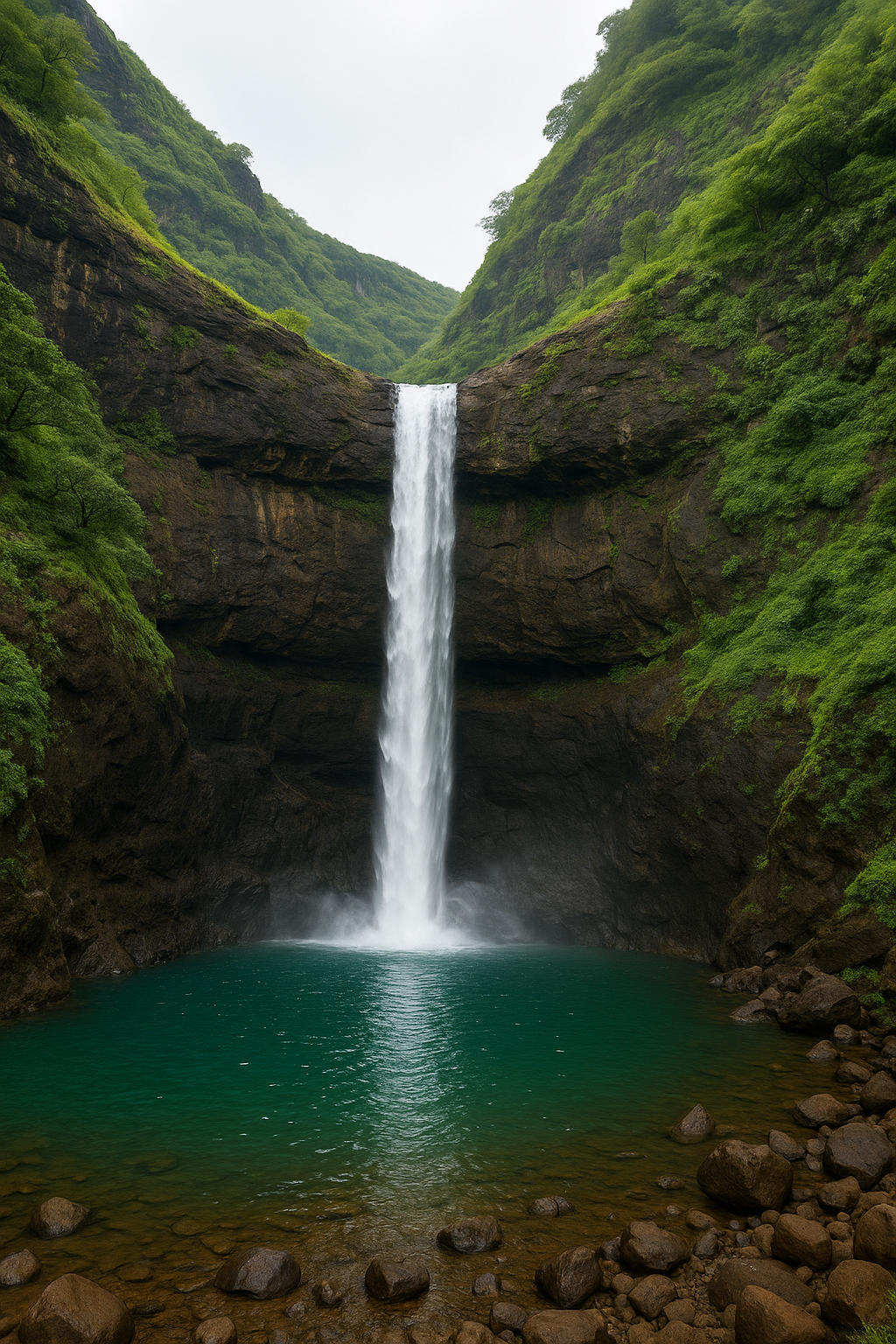Ratangad Fort: A Timeless Jewel of the Sahyadris

Strong 8k brings an ultra-HD IPTV experience to your living room and your pocket.
Introduction
Nestled deep within the Sahyadri mountain ranges of Maharashtra, Ratangad Fort stands as a magnificent testament to Maratha heritage, ancient architecture, and the sheer natural beauty of the Western Ghats. Often called the “Jewel of the Sahyadris,” Ratangad is not just a popular trekking destination but also a historical marvel that dates back over 400 years. With its strategic location overlooking the Bhandardara backwaters and its unique geological features like the “Nedhe” (a natural rock cavity at the summit), Ratangad offers an unforgettable experience to trekkers, history enthusiasts, and nature lovers alike.
This article delves into every aspect of Ratangad Fort—from its history and architecture to the trekking route, flora and fauna, local culture, and tips for visiting.
Historical Background
Ratangad Fort has roots dating back to the 11th century and is believed to have been built during the reign of the Bahmani Sultanate. It was later captured and fortified by Chhatrapati Shivaji Maharaj in the 17th century. The fort served as a watchtower for guarding the region around Bhandardara, Harishchandragad, and Alang–Madangad–Kulang (AMK) forts.
The name "Ratangad" means “Jewelled Fort,” possibly due to its majestic location amidst lush valleys and its commanding view of the surrounding peaks. Shivaji Maharaj recognized its importance in defending the Konkan region and integrated it into the Maratha kingdom’s military network.
Though now in ruins, the remains of bastions, stone structures, water cisterns, and rock-cut caves still whisper tales of the fort's vibrant past.
Geographical Location and Landscape
Ratangad Fort is located in the Ahmednagar district, near the boundary shared with Nashik and Pune districts. It lies near the village of Ratanwadi, which serves as the base village for the trek. The fort is perched at a height of approximately 4,250 feet (1,295 meters) above sea level, making it one of the higher forts in the region.
The fort offers panoramic views of Bhandardara Lake, Wilson Dam, and neighboring forts like Alang, Madan, Kulang, Harishchandragad, and even Kalsubai, the highest peak in Maharashtra.
Trekking to Ratangad Fort
Base Villages
There are two main base villages for trekking to Ratangad:
Ratanwadi – The most popular route. Accessible via boat ride across Arthur Lake from Bhandardara to reach Ratanwadi.
Samrad Village – Preferred by experienced trekkers who want to combine it with Sandhan Valley.
Ratanwadi is also home to the famous Amruteshwar Temple, a 1,200-year-old Hemadpanti-style Shiva temple and a must-visit site before or after the trek.
Trek Details
Trek Grade: Moderate
Duration: 3–4 hours (ascent); 2–3 hours (descent)
Total Distance: Approx. 6–7 km (one way)
Best Season: October to February (post-monsoon and winter)
Route Overview
The trek begins with a scenic trail through fields and gradual forest inclines. The initial section is relatively easy, passing through dense greenery, streams, and occasional rock patches. As the trek progresses, it becomes steeper with iron ladders bolted into rocks to help climbers ascend vertical sections.
The last stretch of the climb includes a thrilling ladder climb that opens up to the fort entrance near a rock-cut cave that can shelter 20–30 people.
Major Attractions on the Fort
1. Nedhe (Eye of the Needle)
One of the most iconic features of Ratangad is the Nedhe, a massive natural cavity created by wind erosion. It's also called the "Nedhe Khind." This hole in the rock face, large enough to walk through, offers an exhilarating view of the valley. Winds rushing through it create an eerie whistle, enhancing the mystique of the place.
2. Rock-Cut Caves
Near the entrance of the fort are ancient caves carved into basalt rock, most likely used for storage and shelter by the Maratha army. Today, these caves serve as a resting and camping spot for trekkers.
3. Fortifications and Bastions
Though much of the fortification is in ruins, four main gates—Ganesh, Hanuman, Konkan, and Trimbak—can still be seen. Each bastion tells a tale of the military foresight and architectural skill of that era.
4. Water Cisterns
There are several water tanks (kunds) carved into the rock that still hold potable water, even during summer. The major ones are Chambhar Tank, Sadar Tank, and Waghdya Tank. These cisterns are crucial for trekkers who camp overnight.
5. Panoramic Views
From the summit, one can see:
Kalsubai Peak – Maharashtra’s highest peak.
Alang, Madan, Kulang (AMK) – The trio of the most difficult Sahyadri treks.
Harishchandragad – Another iconic fort with the Konkan Kada.
Wilson Dam and Arthur Lake – Sprawling water bodies reflecting the skies.
Flora and Fauna
Ratangad is enveloped in dense forests of the Kalsubai-Harishchandragad Wildlife Sanctuary. During the monsoon and immediately after, the slopes come alive with wildflowers, moss-covered trees, and seasonal waterfalls.
Common flora includes:
Karvy shrubs (which bloom once every 7 years)
Wild orchids
Ferns and lichens
Bamboo clusters
Fauna you might encounter:
Langurs
Barking deer
Wild boars
Various bird species like Indian robin, drongos, and paradise flycatchers
Occasional leopard sightings have also been reported in the surrounding forests.
Camping and Accommodation
Trekking groups and solo adventurers often choose to camp atop Ratangad or near the caves. The fort has flat patches that allow for tent pitching. Alternatively, the caves provide basic shelter during the night.
Villagers from Ratanwadi also offer homestays or local lodging, including arrangements for food (poha, bhakri, pithla) and local guides.
Cultural Significance
Apart from historical and military value, Ratangad is a spiritually significant site for locals. The Amruteshwar Temple at Ratanwadi is a masterpiece of Hemadpanthi architecture and serves as a pilgrimage site. Lord Shiva is worshipped with great reverence, especially during Mahashivratri.
Locals also celebrate fort festivals, involving cultural programs and group hikes that promote fort preservation and history.
Myths and Legends
Many folk stories revolve around Ratangad. One such tale says that the Nedhe was formed by a massive blow from Lord Hanuman's mace. Others say that the caves once connected to Harishchandragad through a hidden tunnel, which has since collapsed.
While these stories may be apocryphal, they add a sense of awe and allure to the fort.
Tips for Trekkers
Fitness: Moderate fitness is required; some rock patches and ladders may be challenging for first-time trekkers.
Water: Carry enough water, though cisterns may be full post-monsoon.
Clothing: Wear trekking shoes, full-sleeved shirts, and carry rain protection during monsoon.
Guides: Hiring a local guide can enhance your experience and ensure you stay on the trail.
Leave No Trace: Don’t litter. Respect nature and heritage.
Nearby Attractions
Bhandardara Dam (Wilson Dam) – Ideal for photography and boating.
Randha Falls – A spectacular monsoon waterfall downstream of the dam.
Sandhan Valley – A deep canyon offering rappelling and rock-patching adventures.
Kalsubai Peak Trek – For those wanting a double adventure.
Best Time to Visit
Monsoon (June to September): Lush greenery and waterfalls, but the trail becomes slippery.
Post-Monsoon (October to December): Best time with clear skies and green landscapes.
Winter (January to February): Cool, dry weather and ideal for camping.
Summer (March to May): Dry and hot, not recommended unless you start early morning.
How to Reach
From Mumbai / Pune
By Train: Get down at Igatpuri or Kasara. Then take a local jeep to Bhandardara.
By Road: Drive to Bhandardara via Ghoti or Akole. From Bhandardara, take a boat or jeep to Ratanwadi.
Private vehicles can reach up to Ratanwadi via narrow roads. Ample parking is available in the village.
Conclusion
Ratangad Fort is more than just a trekking destination—it's a living relic of Maharashtra’s glorious past, wrapped in the serenity of the Western Ghats. Whether you're chasing panoramic sunrise views from the summit, exploring rock-cut caves, or simply soaking in the natural beauty, Ratangad never disappoints.
Its blend of adventure, history, and natural charm makes it an ideal weekend escape for those seeking both thrill and tranquility. As you stand atop the Nedhe, wind whipping around you and valleys sprawling far below, you'll feel the same spirit of freedom that once stirred the hearts of warriors who called this fort their home.
Note: IndiBlogHub features both user-submitted and editorial content. We do not verify third-party contributions. Read our Disclaimer and Privacy Policyfor details.







